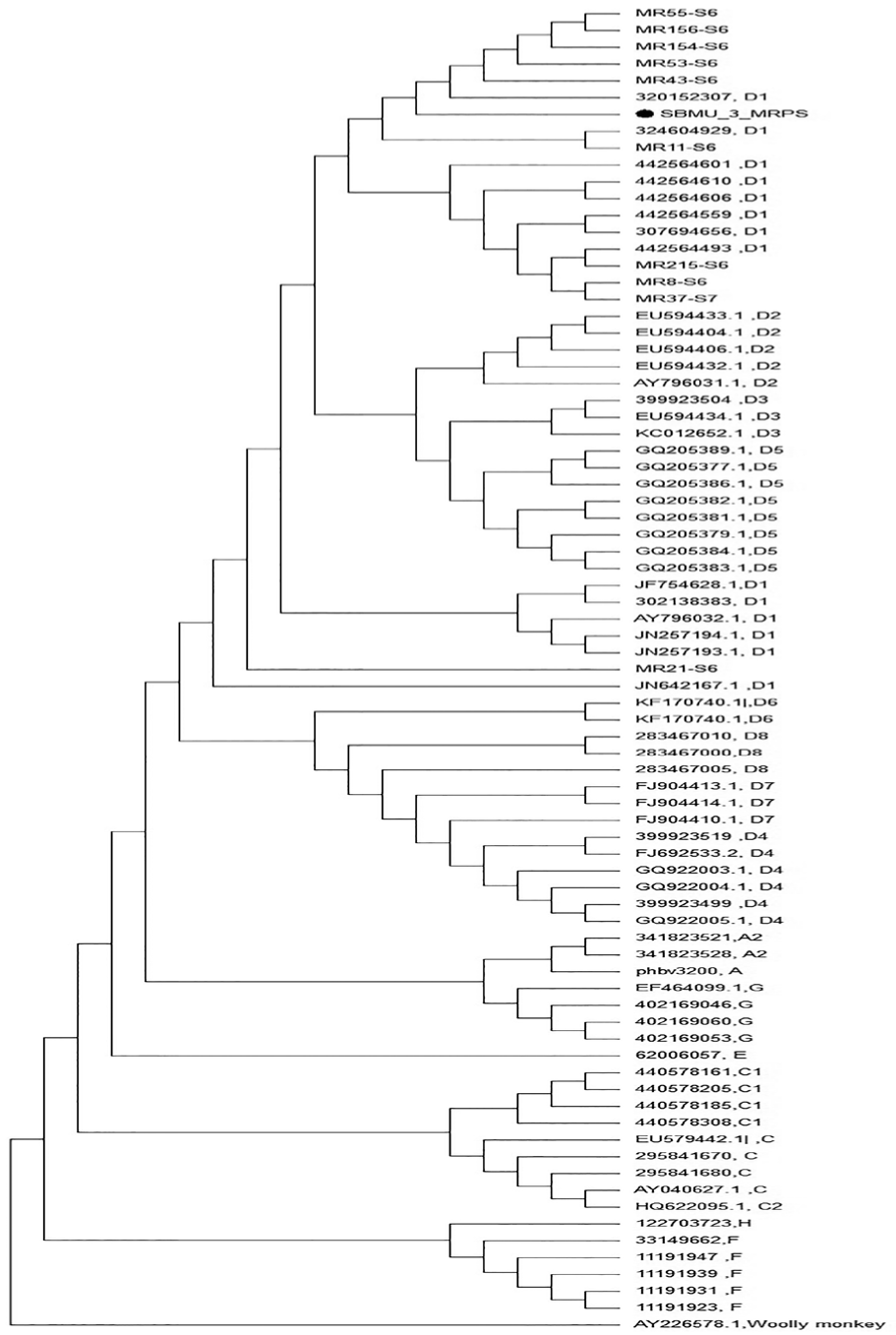Hepatitis B Virus (Hepadnaviridae: Orthohepadnavirus: Hepatitis B virus) among Hospitalized Mentally Disabled Patients is not transmitted by their nurses or family members
- 作者: Sarbandi H.1, Hosseini S.M.1, Vakili K.2, Fathi M.2, Deravi N.V.2, Vaezjalali M.3
-
隶属关系:
- Department of Microbiology, Faculty of Biological Sciences, Shahid Beheshti University of Medical Sciences
- Student Research committee, Faculty of Medicine, Shahid Beheshti University of Medical Sciences
- Department of Microbiology, Faculty of Medicine, Shahid Beheshti University of Medical Sciences
- 期: 卷 65, 编号 6 (2020)
- 页面: 350-356
- 栏目: ORIGINAL RESEARCHES
- URL: https://journal-vniispk.ru/0507-4088/article/view/118149
- DOI: https://doi.org/10.36233/0507-4088-2020-65-6-5
- ID: 118149
如何引用文章
全文:
详细
Background. Prevalence of hepatitis B virus (HBV) infection has been reported to be higher in the institutionalized mentally disabled patients than that of the general population previously reported in Iran. This study aims to investigate HBV infection among nurses and families of the hospitalized mentally disabled patients.
Material and methods. This study was conducted on 110 nurses and family members of the mentally disabled patients who were hospitalized in five residential care centers of Tehran. The presence of hepatitis B surface antigen (HBsAg) and hepatitis B core antibody (HBcAb) was examined using the enzyme-linked immunosorbent assay (ELISA). Afterwards, HBV DNA was extracted, and then propagated via a nested polymerase chain reaction (PCR) and specific primers. Finally, a phylogenetic tree was constructed using the neighbor-joining method to compare virus genomes in the nurses’ serum with other isolated HBVs worldwide.
Results. Out of 102 studied nurses, three (3%) were positive for HBsAg (100% female). Also, no patient was positive for the HBV genome, while eight (7.3%) nurses were positive for HBcAb including two (25%) males and six (75%) females. Genome sequencing of one DNA positive sample showed that the isolated virus from this patient contained sub genotype D1 and subtype ayw2. The results of none of the family members were positive for HBsAg, HBcAb, or HBV DNA.
Conclusion. This study showed a higher prevalence of HBsAg among nurses (3%) compared to the Iranian general population (1.7–2.1%). The virus isolated from the nurses belonged to subgenotype D1 and subtype ayw2 in accordance with previous Iranian reports. Also, there was no drug-resistant or vaccine-escape mutations in the obtained viral genome. Moreover, low immune pressure on the virus in the asymptomatic chronic HBV patients might be responsible for low nucleotide divergence among the derived HBV genome.
作者简介
H. Sarbandi
Department of Microbiology, Faculty of Biological Sciences, Shahid Beheshti University of Medical Sciences
编辑信件的主要联系方式.
Email: fake@neicon.ru
ORCID iD: 0000-0003-3243-9803
Tehran 伊朗伊斯兰共和国
S. Hosseini
Department of Microbiology, Faculty of Biological Sciences, Shahid Beheshti University of Medical Sciences
Email: fake@neicon.ru
ORCID iD: 0000-0002-8906-5833
Tehran 伊朗伊斯兰共和国
K. Vakili
Student Research committee, Faculty of Medicine, Shahid Beheshti University of Medical Sciences
Email: fake@neicon.ru
ORCID iD: 0000-0001-7296-3218
Tehran 伊朗伊斯兰共和国
M. Fathi
Student Research committee, Faculty of Medicine, Shahid Beheshti University of Medical Sciences
Email: fake@neicon.ru
ORCID iD: 0000-0002-4811-3982
Tehran 伊朗伊斯兰共和国
N. Deravi
Student Research committee, Faculty of Medicine, Shahid Beheshti University of Medical Sciences
Email: fake@neicon.ru
ORCID iD: 0000-0002-6965-6927
Tehran 伊朗伊斯兰共和国
M. Vaezjalali
Department of Microbiology, Faculty of Medicine, Shahid Beheshti University of Medical Sciences
Email: fake@neicon.ru
ORCID iD: 0000-0003-3370-7566
Tehran 伊朗伊斯兰共和国
参考
补充文件







